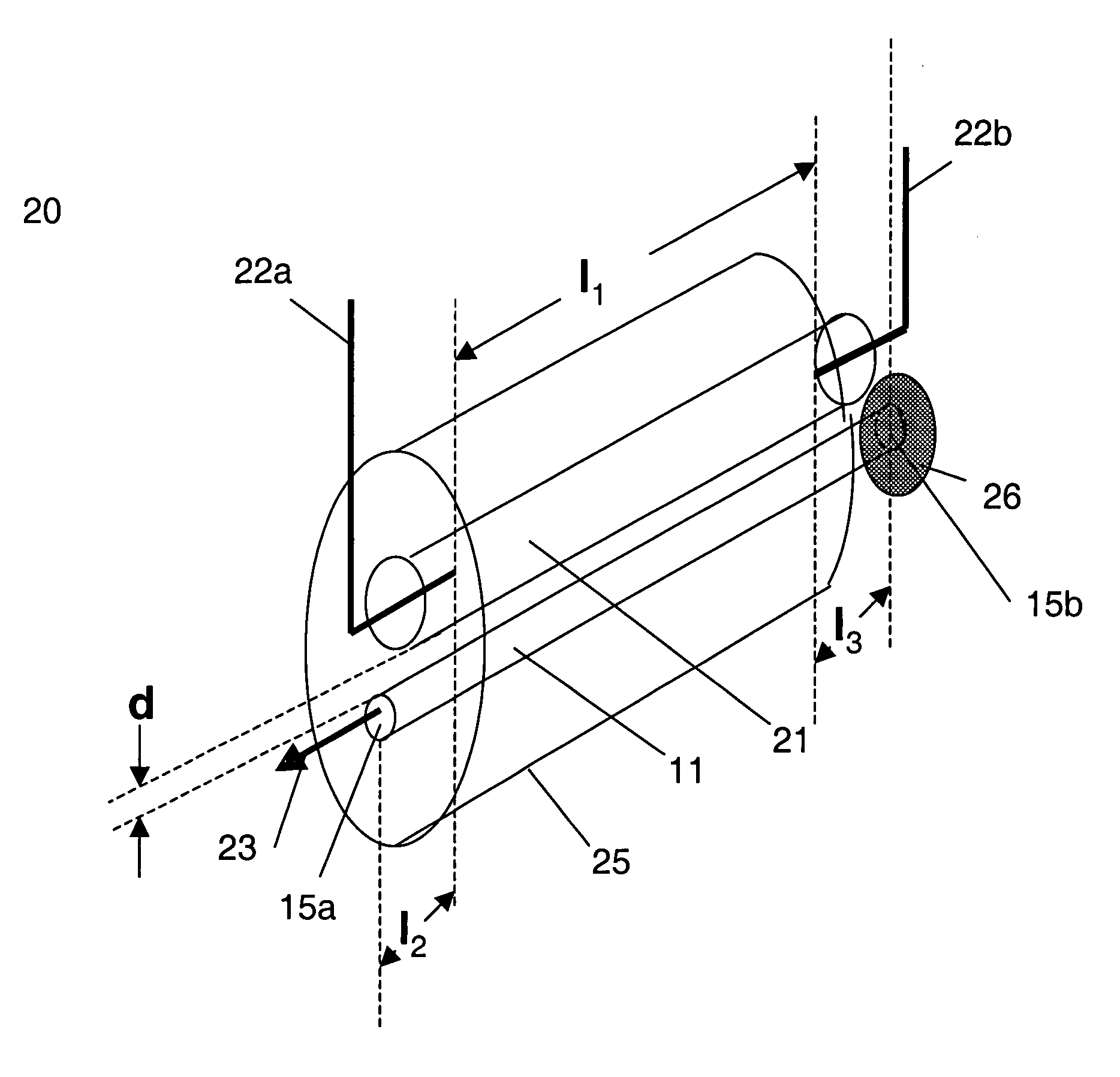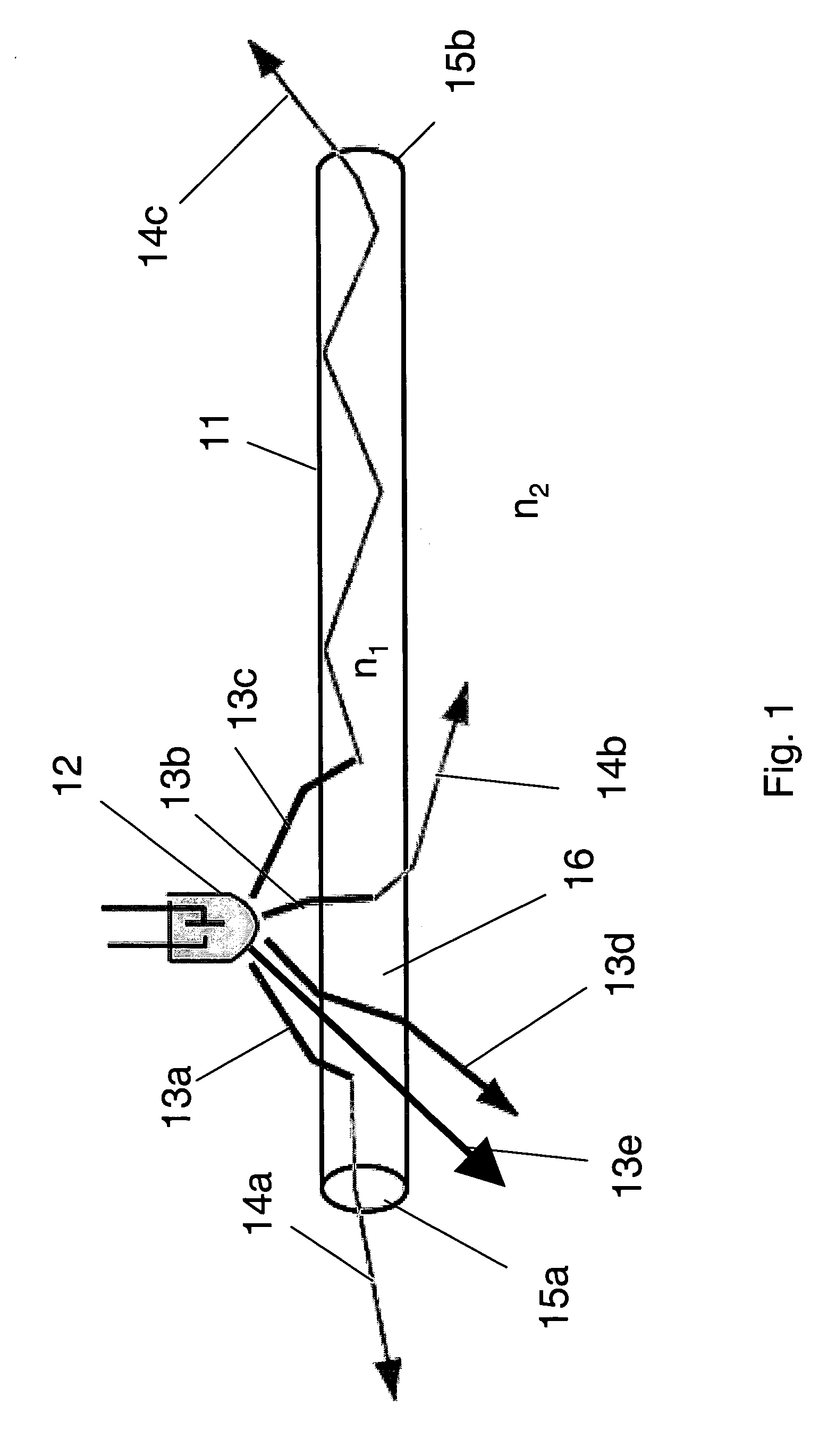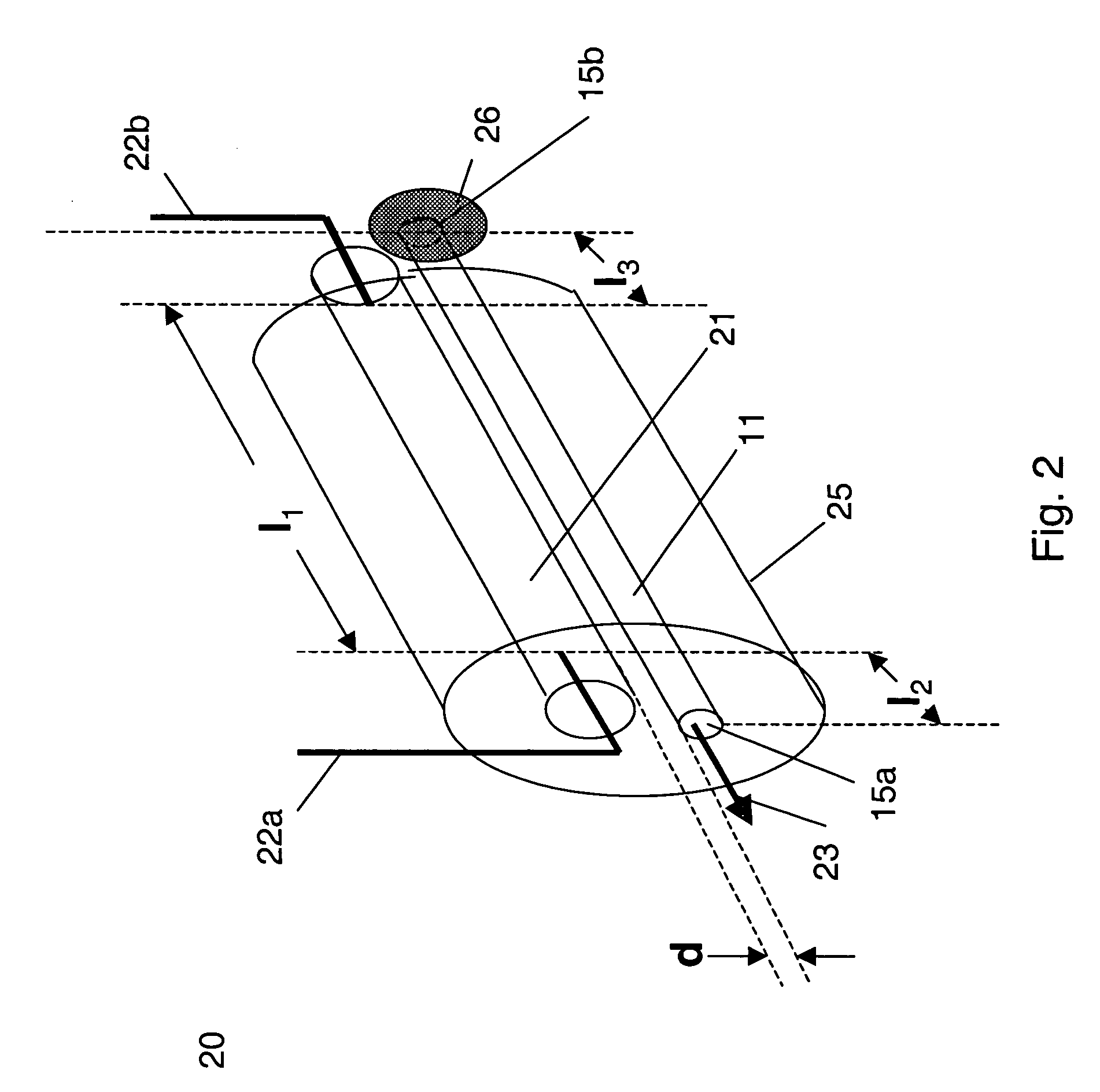System and method utilizing guided fluorescence for high intensity applications
a fluorescence and high intensity technology, applied in the field of high brightness optical sources, can solve the problems of limited ability to increase insufficient brightness of most types of optical sources to deliver the intensity or fluence necessary, and insufficient time for heat produced by absorption in the targeted tissue to conduct away from the absorption volume of the targeted tissu
- Summary
- Abstract
- Description
- Claims
- Application Information
AI Technical Summary
Benefits of technology
Problems solved by technology
Method used
Image
Examples
Embodiment Construction
[0031] One embodiment herein provides a fluorescence concentrator which is capable of producing a high spectral brightness and high intensity optical source suitable for providing therapeutic energy, which can be used for medical procedures.
[0032] An embodiment herein provides a system which includes a body with a fluorophore, which can be a transparent optical material doped with a fluorophore to form a fluorescence concentrator. The fluorescent concentrator can be optically smooth at most or all surface boundaries. In one embodiment the material has an index of refraction higher than its surroundings so that total internal reflection (TIR) can occur at the concentrator surfaces. The concentrator has at least one surface for outputting energy. This output area can be significantly smaller than the total surface area of the fluorescence concentrator. The concentrator is illuminated by an adjacent illumination source which optically pumps the fluorophore causing it to emit fluoresce...
PUM
 Login to View More
Login to View More Abstract
Description
Claims
Application Information
 Login to View More
Login to View More - R&D
- Intellectual Property
- Life Sciences
- Materials
- Tech Scout
- Unparalleled Data Quality
- Higher Quality Content
- 60% Fewer Hallucinations
Browse by: Latest US Patents, China's latest patents, Technical Efficacy Thesaurus, Application Domain, Technology Topic, Popular Technical Reports.
© 2025 PatSnap. All rights reserved.Legal|Privacy policy|Modern Slavery Act Transparency Statement|Sitemap|About US| Contact US: help@patsnap.com



